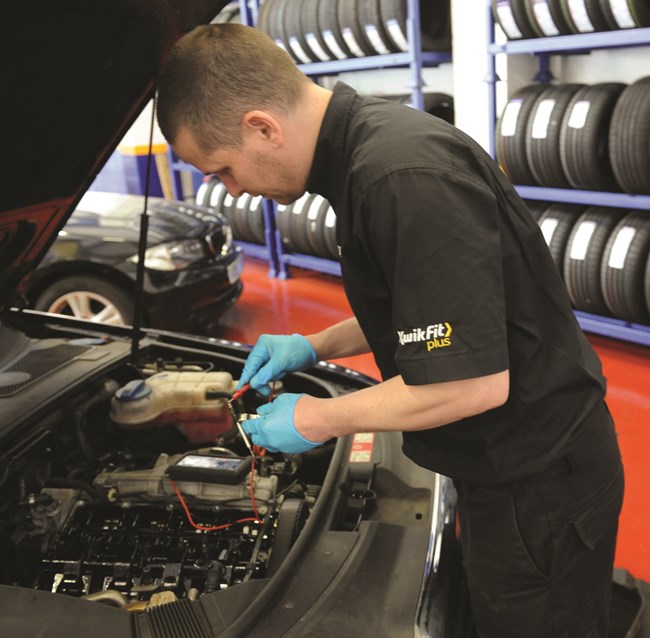We use cookies to ensure that we give you the best experience on our website. If you continue without changing your settings, we will assume that you are happy to receive all cookies on the Business Car website. However, if you would like to, you can change your cookies at any time

The start point for the best source of fleet information |
Getting the lowdown on SME downtime
Date: 16 March 2020 | Author: Sean Keywood

Keeping downtime to a minimum is a key focus for all fleets. After all, when a car is off the road it is effectively useless to the organisation, and the longer it stays that way the bigger the financial cost is bound to be. It is an issue for organisations of all sizes - however, the inherent restrictions faced by smaller operators can make it a particularly demanding nut to crack, and one where the relative costs can be greater.
Richard Hipkiss, managing director of fleet management company Fleet Operations, believes that SMEs often run into downtime problems due to the lack of a dedicated manager taking control of the situation.
"You have probably got somebody trying to manage the fleet on the side of the desk, maybe a PA to an MD, or in HR, or an office manager, so they won't be measuring downtime, or controlling downtime," he says.
"It will probably be a process that is uncontrolled in as much as when there is an issue, one of your suppliers - whether it is a maintenance provider or leasing company or whatever - will be dealing with it, but most small organisations won't have a focus on getting the vehicle back on the road, and getting direct replacement vehicles back off the road.
"There are some organisations that do it very well, but in the main it is an area that is often overlooked in SMEs, because of the fact you have not got a central control point."
Rob Ellis, head of fleet sales at Kwik Fit, agrees that fleet being a lower priority than other business activities can be a problem.
"It is key for all organisations to reduce downtime," he says. "However, SMEs generally stretch their abilities further and have less leeway to cope with the unexpected.
"For many SMEs, although their fleet is essential to their business, their focus is on the latter. They are by nature able to make things happen for their customers.
"Often that achieves the desired results. However, the actions taken can have a great impact on the profitability of providing the service and that may not be realised until a later date.
"That cycle continues with a knock-on effect on other business functions, but the root cause is not tackled: vehicle downtime."
As Hipkiss explains, this failure to get on top of downtime can be costly, with vehicles off the road incurring both direct and indirect costs, some of which might not be appreciated by SMEs.
"The direct cost is quite easy to measure, because you replace the vehicle with a hire vehicle, and the cost of that vehicle is a direct cost," he says.
"Your indirect cost of downtime is the impact that has on the business, whether you are missing appointments with customers, losing appointments and so on, so you have to look at the obvious and then the indirect.
"Even big corporates struggle with this, so certainly with an SME it is often overlooked, and obviously it is a significant area of cost creep, because the indirect cost of downtime can be anything from £100 a day to £2,000, depending on the nature of the business and what you are doing."
This is a point that is also taken up by Simon Staton, director of client management at Venson Automotive.
"Vehicle downtime, particularly if it is unscheduled, can have a significant knock-on effect in terms of business efficiency, losing organisations several thousands of pounds per day and potentially causing reputational damage," he says.
"However, most SMEs overlook this, counting only the hours and minutes a vehicle is on the ramp in the garage as having a direct hit on their business.
"In reality, they need to consider how to reduce vehicle downtime from the moment it is off the road so as to reduce the impact on employee productivity and unnecessary replacement vehicle costs, the combination of which greatly impacts the bottom line."
Staton says that a good way to reduce downtime is for fleets to stay on top of regular vehicle maintenance, a process in which they can involve their drivers.
"Introducing a system whereby drivers conduct daily routine inspections on their vehicles, and report back any concerns they may have, helps to identify issues before they become a significant problem," he explains.
"Regularly checking tyre pressure is crucial because low pressure will affect a vehicle's handling, tyre wear and fuel consumption - all contributing to vehicle and driver safety."
Staton adds that by developing a maintenance schedule for each vehicle, businesses can keep track of when an inspection is due, when it has taken place and any subsequent work that was carried out.
"This provides a platform to schedule future vehicle servicing dates, which in turn should see replacement vehicles only booked if necessary and for shorter periods, minimising operational disruption and costs to the business," he says.

Kwik Fit's Ellis says that when maintenance is required, having easy access to it is crucial.
"The key is having a reactive (drive-in) ability within the geographical areas operated and a planned (booked) regime available at locations and times that fit their business," he says.
"In some cases, smaller SMEs and those that have expanded have often lost sight of how they maintain their fleet. Due to business growth and familiarity with an older process, some have become inefficient.
"Some companies started with a small fleet, but as the business has expanded, fleet processes have remained unchanged with, for example, vehicles being recalled from far and wide to a head office for maintenance and service, meaning the day is spent off the road.
"While a business has been concentrating on its core activities it has not realised that older, and once perfectly acceptable, processes are now inefficient."
For Hipkiss, the first step to reducing downtime costs is to understand exactly what they are.
"You can have vehicle downtime through maintenance, through accident, and through reallocation because somebody has left. All of which have a direct cost in downtime,"
he explains.
"The start is to understand what sorts of downtime you have in the fleet, and whether there are initially any simple ways of measuring that. Once you can measure it, you can obviously look at a way to manage it.
"It may well be giving somebody additional responsibility for fleet in the business, it might be to look for a fleet management business like ours that can manage that for you, or it might be to look at the supply chain and see if you can consolidate your maintenance programme across all your vehicles, accident management and so on."
Once this is done, Hipkiss says that some simple management practices can help SMEs get on top of the issue.
"It is managing your drivers, it is managing downtime, in terms of the way they are driving and what they are doing," he says. "It is managing their schedules, so if a driver is going in for a service and they need tyres you have them done at the same time rather than on separate days, so you halve the downtime - so that is scheduling work as best you can.
"It is looking at your supply chain, so you can get control and a central point of contact over downtime.
"These aren't big tasks for small businesses. It is just getting that central control point, and obviously ensuring that you have got supply chain support to be able to deliver what you need to when vehicles are off the road."
Having named hiring replacement vehicles as an obvious direct downtime cost, Hipkiss says fleets should be judicious about when this option is taken up.
"The reason you would hire a vehicle is if you have got work to do where you need to be mobile and you carry out that work in that vehicle. If, for instance, you have got some scheduled maintenance and you are working round scheduled events in your diary, then you can often use a collect and deliver service, so you are not picking up that direct cost of the hire, or you can utilise a courtesy car, which can be free of charge with garages and repairers.
"Really, a hire vehicle should only be used if it is essential the driver is mobile, and they can't do the job in a courtesy vehicle."
Hipkiss adds that other potential fleet management actions, such as implementing driver training or telematics, can also play a role.
"An unsafe driver is normally an aggressive driver," he says. "An aggressive driver is uneconomical in terms of fuel use, but also the way that the vehicle is driven has a direct effect on maintenance downtime.
"The key requirement obviously is to ensure your employees are safe while driving, but there is also a knock-on effect in terms of maintenance costs, both directly and indirectly, through downtime.
"Telematics can help to monitor driving style. You can also look at work patterns and work schedules through historic and current telematics data, so instead of replacing a vehicle for a couple of days it is off the road, somebody else could work the area and maintain customer appointments."











